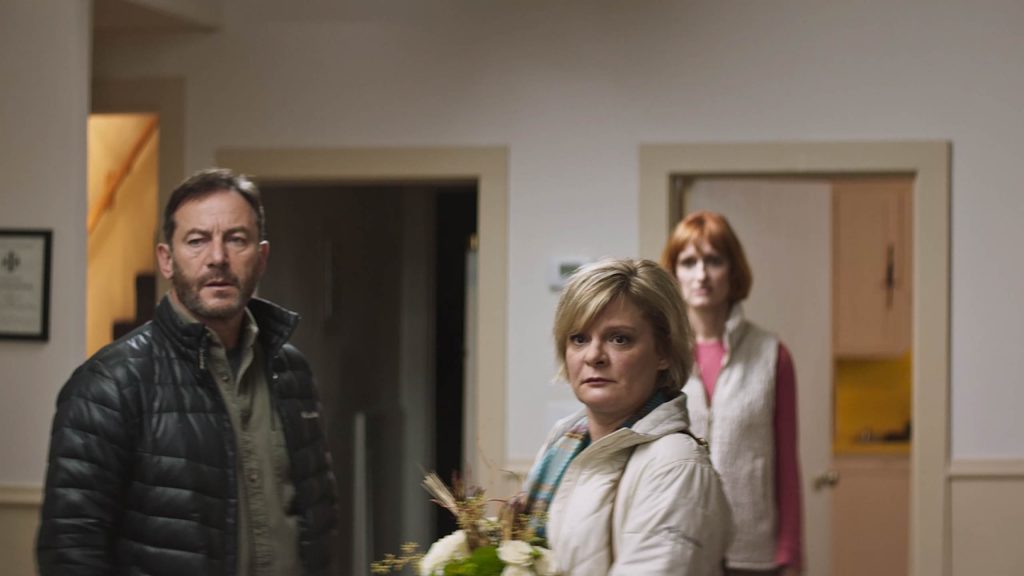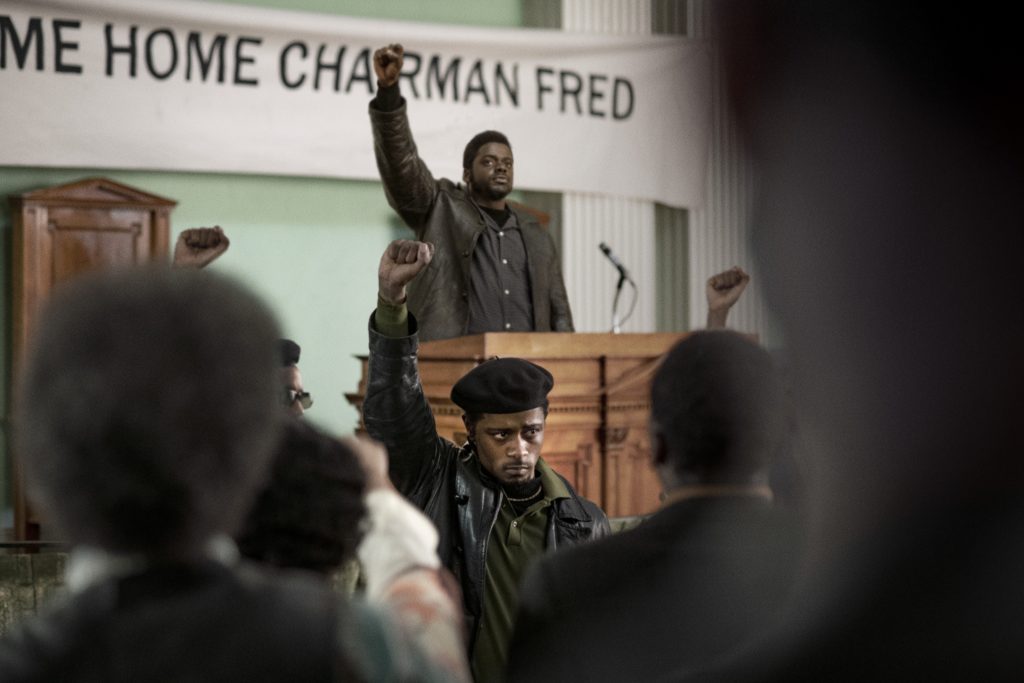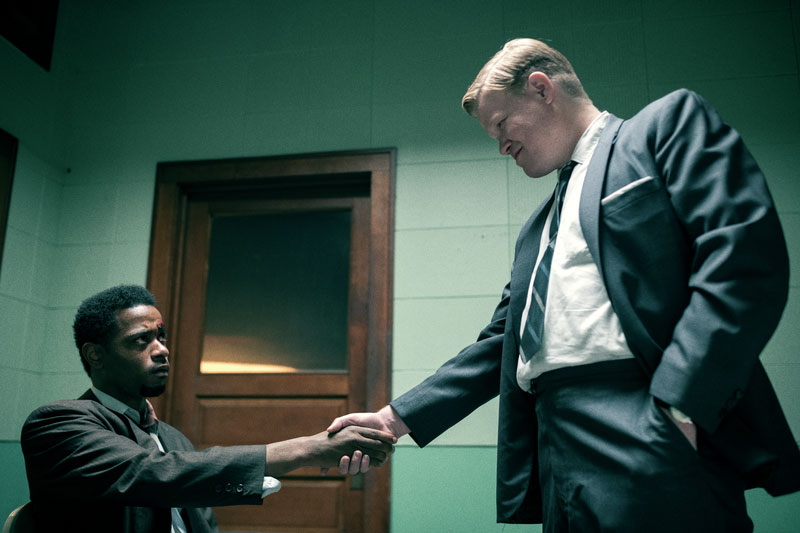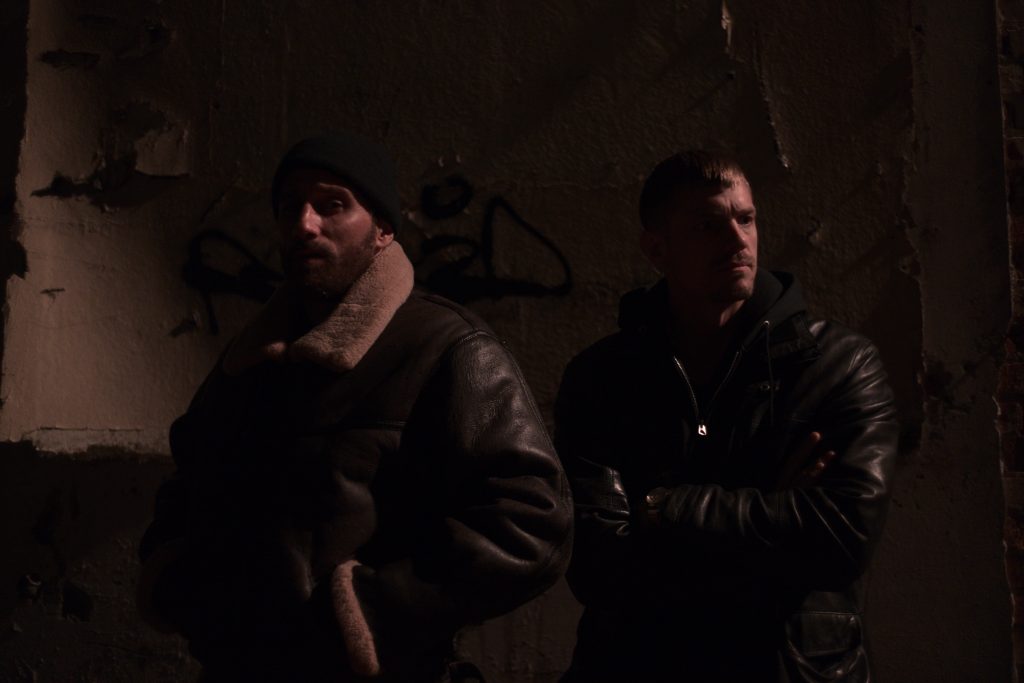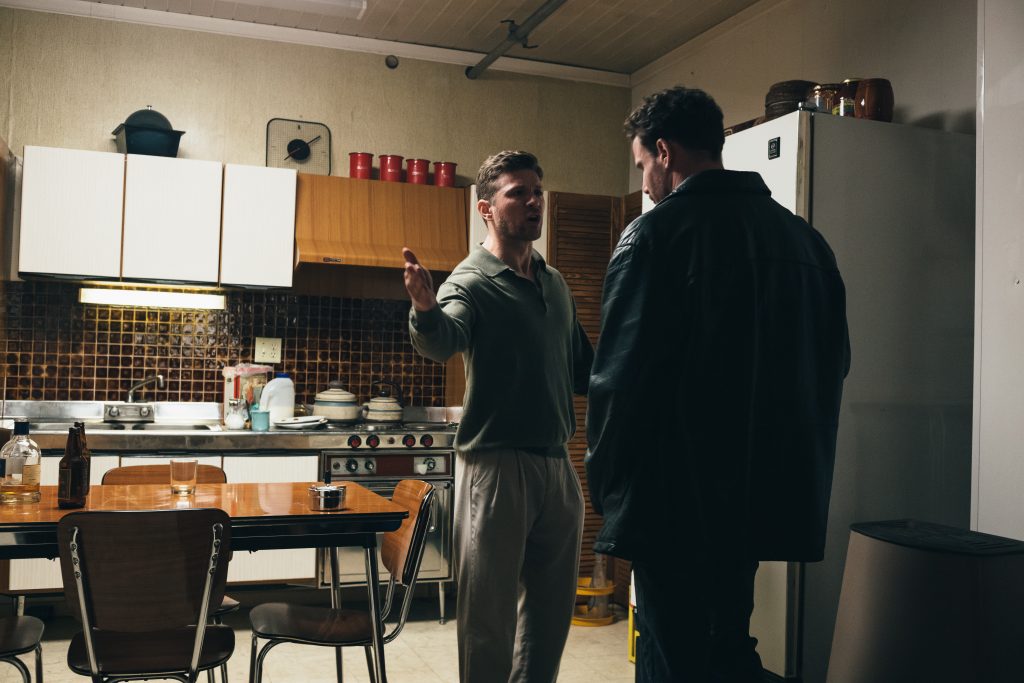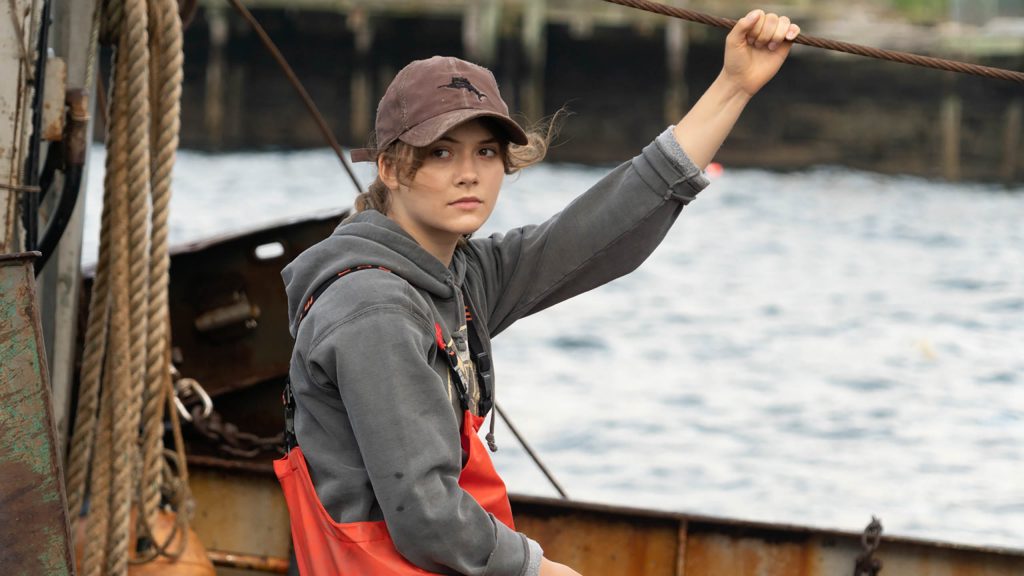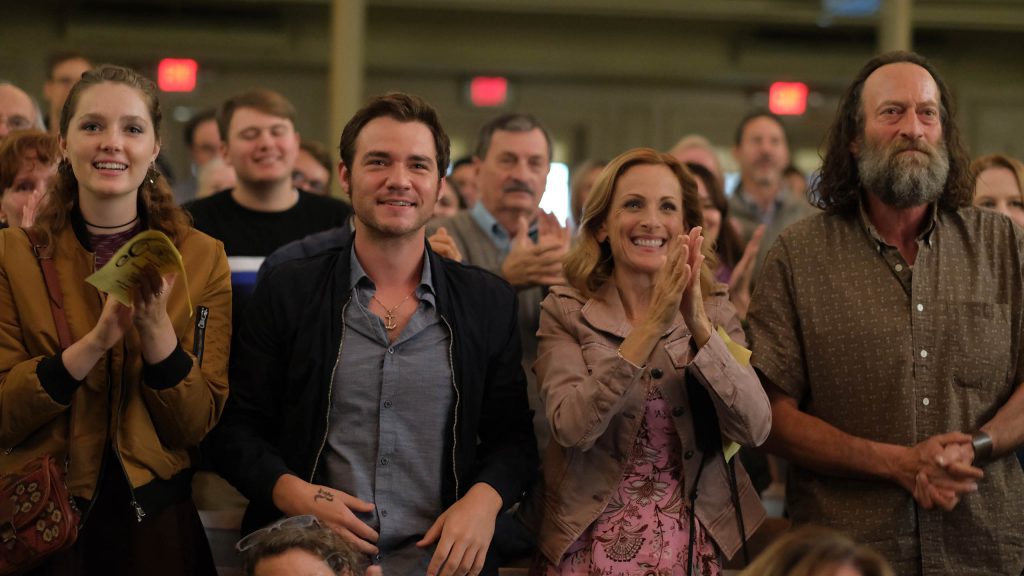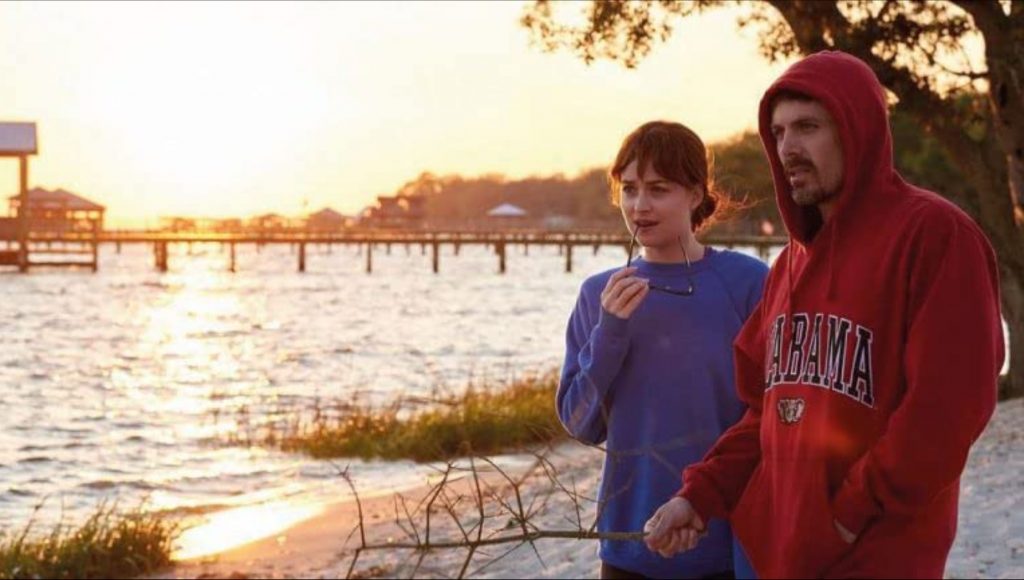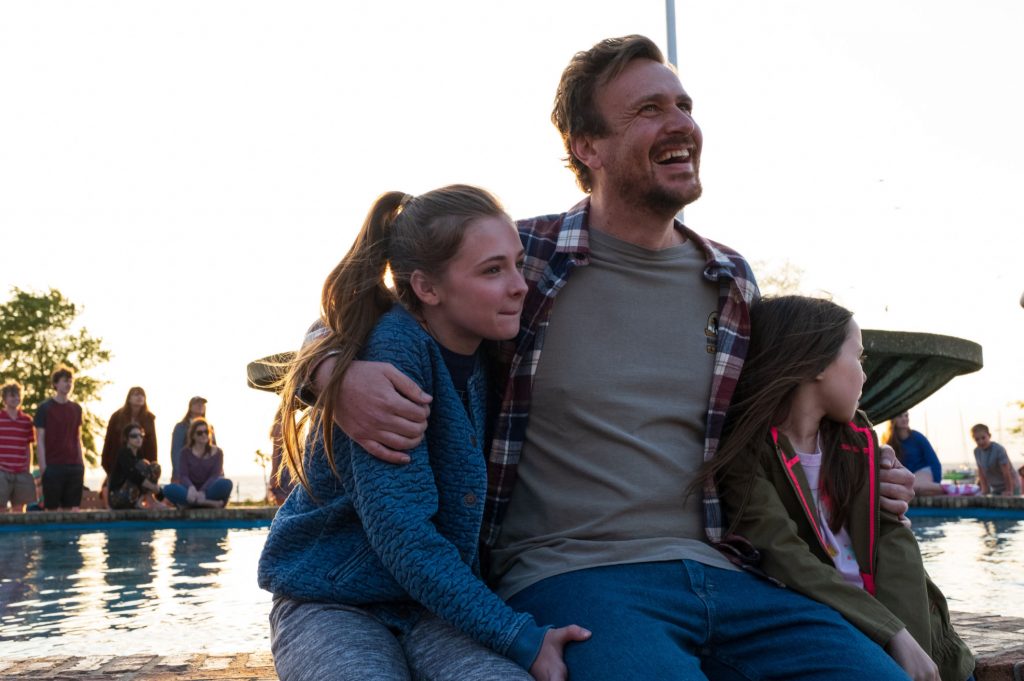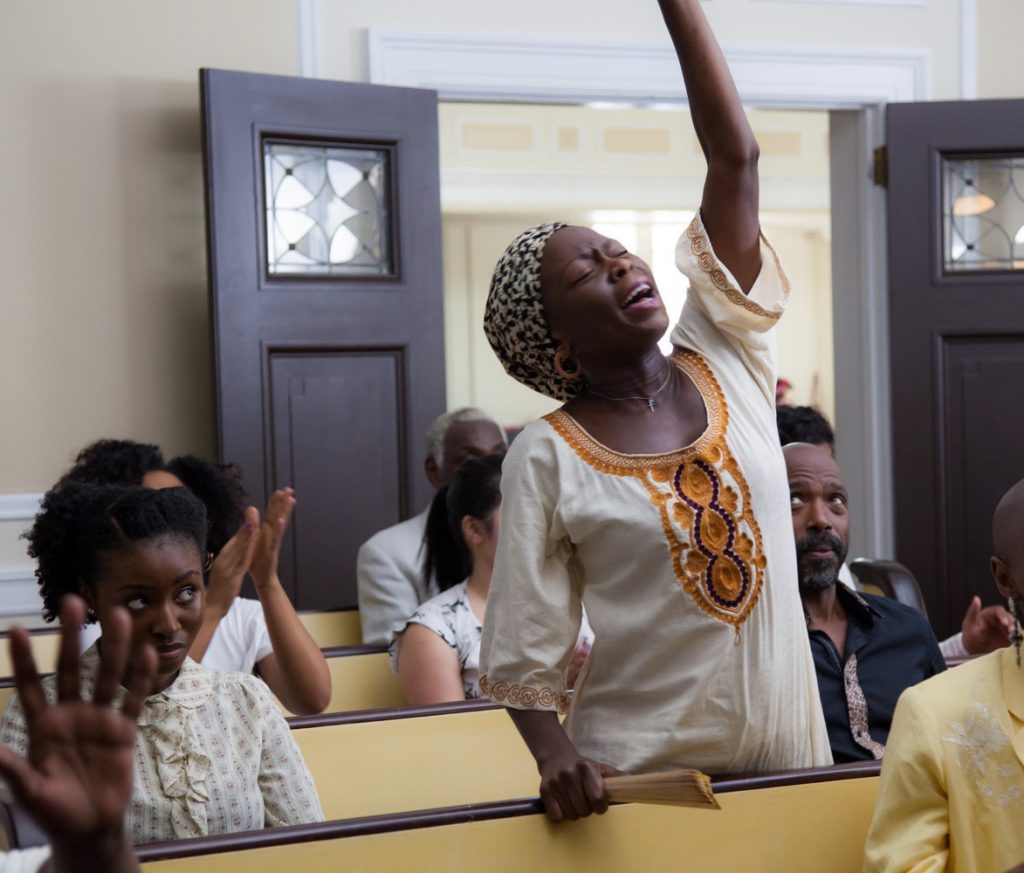February 7, 2021
by Carla Hay

Directed by Filippo Meneghetti
French with subtitles
Culture Representation: Taking place in an unnamed city in France, the dramatic film “Two of Us” features an all-white cast of characters representing the middle-class.
Culture Clash: Two elderly women who have been longtime secret lovers have different ideas on when to make their romance public, and then one of them has a stroke that takes the relationship in another direction.
Culture Audience: “Two of Us” will appeal primarily to people are interested in compelling dramas that deal with issues of LGBTQ people who are afraid to reveal their sexual identities and issues about health care for elderly people.

The French dramatic film “Two of Us” shines an emotionally powerful light on an issue that’s almost never covered in mainstream films: What happens when LGBTQ partners have a health crisis that needs caregiver aid, but one partner has no legal right to care for the other? The issue becomes more complicated when the couple’s romance has been kept a secret and the ailing partner wants to keep the relationship “in the closet.”
“Two of Us” is the first feature film from writer/director Filippo Meneghetti, who shows a knack for telling this story in an artful and respectful way. There are a few unexpected twists and turns in the movie, but it’s also a film that is entirely believable. Thanks to an intriguing screenplay and convincing performances from the cast members, “Two of Us” touches on universal themes about the freedom to love openly and how that freedom is often restricted by bigotry and fear. It’s no wonder that “Two of Us” was France’s entry for the 2021 Academy Awards.
“Two of Us” tells the story of retirees Nina Dorn (played by Barbara Sukowa) and Madeleine Girard (played by Martine Chevallier), who live across the hall from each other in an apartment building in an unnamed city in France. To the people they know, Nina and Madeleine seem to be platonic neighbors. But in reality, Nina and Madeleine (whom Nina has affectionately nicknamed Mado) have been secret lovers for about 20 years.
Madeleine is a native of France, while Nina is originally from Germany. It’s revealed later in the story that Nina used to be a tour guide in various countries, and it’s implied that Nina met Madeleine this way. Madeleine is a widow whose husband has been dead for a few years, so Madeleine is now the only owner of her apartment.
It’s mentioned more than once in the film that Madeleine’s marriage was an unhappy one, and her late husband was abusive to her emotionally and possibly physically. But now that Madeleine’s husband is dead, she and Nina are free to have sleepovers at each other’s place. They have keys to each other’s apartment.
Nina is the one who usually goes to Madeleine’s apartment, where in one of the early scenes of the movie, they have a lovers’ tryst that shows their passion for each other hasn’t dwindled. In another scene, Madeleine and Nina slow dance closely to the love song “Chariot (Sul Mio Curro),” which is their favorite song as a couple. It’s a song that they like to play to get in a good mood.
Madeleine and her late husband have two children, who are now in their 30s: daughter Anne (played by Léa Drucker) and son Frédéric (played by Jérôme Varanfrain), who visit Madeleine on a regular basis. Anne has a son named Théo (played by Augustin Reynes), who’s about 10 or 11 years old. Madeleine is much closer to Anne than she is to Frédéric, who seems to resent Madeleine because he suspects that Madeleine was unfaithful in her marriage.
Anne is a stylist at a hair salon, and so she’s naturally her mother’s hair stylist too. When Ann does her mother’s hair, it’s their time to catch up on “girl talk.” Anne thinks that she and her mother have the type of relationship where they can tell each other anything. But it won’t be long before Anne finds out that there’s a lot she didn’t know about her mother.
In the beginning of “Two of Us,” Madeleine and Nina are blissfully happy but have reached a crossroads in their relationship. Nina has been bringing up the idea for them to move to Rome and get a place together. Madeleine is more cautious about that idea, but she has agreed to sell the apartment and to finally tell her family about the true nature of her relationship with Nina.
There is very little revealed about Nina’s background. She doesn’t mention having any family members or former lovers. It’s implied that Nina left everything behind in Germany to move to France. Nina is a lot more comfortable with the idea of living openly as a lesbian, but Madeleine is the one who’s resistant to “come out of the closet” because Madeleine is afraid that her children will be upset and reject her.
One day, Madeleine has a prospective buyer come over to look at the apartment. (Apparently, Madeleine is acting as her own real-estate agent, since no agent is seen or mentioned every time she discusses selling the apartment with anyone.) The prospective buyer is a professional-looking man in his 30s named Mr. Brémond (played by Hervé Sogne), who makes an offer of €250,000 to buy the apartment.
Nina plays the part of a nosy neighbor who invites herself over when Madeleine is showing the apartment to Mr. Brémond. Nina’s tells Mr. Brémond that she and Madeleine are friends and her apartment layout and size are identical to Madeleine’s apartment, so Nina says she’s curious about what a prospective buyer would think. Privately, Nina has told Madeleine that she’s saved up enough money for it to be realistic for them to move Rome. Nina’s dream is to live near the Tiber River.
While all of these plans are going on, Madeleine has a small birthday celebration in her home with just her children Anne and Frédéric and grandson Théo. It’s here that Madeleine plans to tell her family that she and Nina are lovers and that they plan to move to another country together. But Madeleine can’t bring herself to tell them. The celebration hits a sour note when the subject turns to Madeleine’s late husband, and Frédéric angrily tells Madeleine that she couldn’t wait until her husband died.
The next day, Nina asks Madeleine with anticipation how Madeleine’s family took the news. “They agreed,” Madeleine tells Nina. It’s a lie of course. And Nina inevitably finds out when she happens to see Mr. Brémond outside the apartment building, and he tells her that Madeleine changed her mind about selling the apartment.
Just at that moment, Madeleine is looking out her apartment window and sees Nina talking to Mr. Brémond. She quickly goes outside to try to diffuse the emotional explosion that’s about to happen. But it’s too late.
Nina furiously confronts Madeleine about her lies and says she can’t take hiding their relationship anymore. Nina then asks Mr. Brémond if he has a problem with two “old lesbians.” A flustered and embarrassed Mr. Brémond says no. Nina then rips into Madeleine some more and ends the argument by calling Madeleine “pathetic” before Nina storms off.
The next day, Nina is over at Madeleine’s place when she notices an unattended frying pan that’s lit on the stove. She senses that something is wrong and looks for Madeleine in the apartment. The next thing you know, an ambulance is called to take Madeleine to a hospital.
Nina and Anne go to the hospital, but since Nina isn’t considered a family member, she can only wait to find out what happened from Anne. In the waiting area, Anne tells Nina that Madeleine had a stroke and the prognosis isn’t good. Although Madeleine is in stable condition, the doctors say it’s unlikely that Madeleine will be able to speak again.
It’s devastating news. And Nina gets even more distraught when she finds out that Anne and Peter have hired a live-in caretaker named Muriel (played by Muriel Bénazéraf), who firmly declines Nina’s offers to help Muriel look after Madeleine. Muriel is also very strict about when Nina can come over to visit Madeleine, by limiting the visiting hours only to during the day. At this point, Muriel and Anne have no idea that Nina has a key to Madeleine’s apartment.
The first time that Nina tries to visit Madeleine when she comes from from the hospital, Muriel tells Nina to come back at 8:30 the next morning. Nina can’t wait that long though, so she sneaks into the apartment while Muriel is asleep. Nina rushes to Madeleine’s side and tells her that she’s sorry for the insulting argument that she had with Madeleine. Unfortunately, Madeleine stares ahead and gives no indication that she’s aware of what Nina is saying or even knows who Nina is.
The movie then shows a forlorn Nina sitting in her apartment the next morning and waiting for the clock to get to 8:30. Nina is careful about appearing too over-eager because Muriel and later Anne begin to show signs that they’re suspicious of Nina. They think it’s odd that Nina shows a little too much interest in being around Madeleine.
Now that Nina can no longer come and go whenever she wants into Madeleine’s apartment, Nina has to decide how she’s going to handle being able to see Madeleine on a daily basis. Nina’s comes up with two options in her plan: win over Muriel or try to get Muriel fired. In the limited time that Nina now spends with Madeleine, she notices that Madeleine seems to be aware of her presence and her physical abilities seem to improve.
Aside from the pressing matter of how much Madeleine can be rehabilitated, there’s the lingering question of how much longer Nina and Madeleine’s relationship can be kept a secret. Nina knows that Madeleine wasn’t ready to tell her family, but should Nina make the decision for her, now that Madeleine can’t speak? And would the family negatively react if they found out the truth?
Madeleine has her stroke about 25 minutes into this 95-minute film, so the rest of the movie really shifts to Nina’s perspective. Her turmoil is compounded by the fact that she has no one she can turn to for help, since Nina and Madeleine really kept their secret love affair only to themselves. It’s enough to drive anyone a little crazy. And there are some things that Nina does that indicate she might be slipping close to that edge.
“Two of Us” has a some melodrama, but not enough to take away from the emotional sincerity of the film. It’s a somber meditation that shows how homophobia can often affect LGBTQ partners from living openly and legally being able to take care of each other if someone in the relationship needs round-the-clock caregiving. From Nina’s perspective, her heartbreak also comes from wondering if the woman she loves is gone forever, because Madeleine can no longer speak and no longer has the personality she used to have.
Sukowa anchors the film with a quiet intensity that takes viewers through Nina’s emotional nightmare and increasing desperation. And although Chevallier’s Madeleine character is a stroke patient for most of the movie, she delivers an impressive performance where she must act primarily with her eyes when Madeleine becomes otherwise physically incapacitated. Before the stroke, Nina seemed to be more the more mysterious one in the relationship since her personal history is very vague. But by the end of the movie, Nina is the character that viewers will end up feeling like they know better, for obvious reasons.
“Two of Us” writer/director Meneghetti doesn’t make any preachy judgments on what happens in the movie. Anne and Nina end up clashing with each other over decisions on how to handle Madeleine’s rehabilitation, but the movie doesn’t try to be heavy-handed about who’s right and who’s wrong. People can see both sides of the argument and find reasons to see why each woman believes strongly that she knows what’s best for Madeleine. In its own heartbreaking way, “Two of Us” is an example of how true love can endure, but it’s better when that love can be expressed openly and honestly.
Magnolia Pictures released “Two of Us” in select U.S. cinemas, on digital and on VOD on February 5, 2021. The movie was released in France and other countries in 2020.

